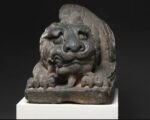In a groundbreaking scientific achievement, researchers have successfully reconstructed the voice of Nesyamun, an ancient Egyptian priest who lived over 3,000 years ago. Using advanced 3D-printing technology and medical scans, scientists have recreated a single sound from Nesyamun’s vocal tract, allowing us to hear a voice from the distant past. This remarkable feat not only provides a unique glimpse into ancient Egyptian life but also opens new possibilities for the study of historical voices.
The Journey to Reconstruct Nesyamun’s Voice
The process of reconstructing Nesyamun’s voice began with detailed medical scans of his mummified remains. These scans provided a precise model of his vocal tract, which was then 3D-printed to create a physical replica. By combining this replica with an artificial larynx, researchers were able to produce a sound that closely resembles what Nesyamun’s voice might have sounded like.
This project was not without its challenges. The position of Nesyamun’s head and the deterioration of his soft tissues over millennia posed significant obstacles. Despite these difficulties, the team persevered, using cutting-edge technology to overcome these hurdles. The result is a sound that offers a fascinating connection to the past, bridging the gap between ancient and modern times.

The significance of this achievement extends beyond the novelty of hearing an ancient voice. It demonstrates the potential of modern technology to unlock new dimensions of historical research. By reconstructing voices from the past, we can gain deeper insights into the lives and cultures of ancient civilizations, enriching our understanding of human history.
The Life and Times of Nesyamun
Nesyamun was a high-ranking priest and scribe at the Karnak temple complex in Thebes, one of the most important religious sites in ancient Egypt. His duties included performing rituals and chanting prayers, roles that required a strong and clear voice. Nesyamun’s coffin, adorned with inscriptions and images, provides valuable information about his life and beliefs.
Nesyamun lived during the reign of Ramses XI, a period marked by political instability and social upheaval. Despite these challenges, he rose to prominence within the temple hierarchy, earning the title of “waab priest.” This position allowed him to participate in the most sacred rituals, including those dedicated to the god Amun.
The inscriptions on Nesyamun’s coffin reveal his hopes for the afterlife. He wished to speak to the gods as he had in life, a desire that has now been partially fulfilled through the reconstruction of his voice. This achievement not only honors Nesyamun’s legacy but also provides a tangible link to the spiritual practices of ancient Egypt.
Implications for Future Research
The successful reconstruction of Nesyamun’s voice has significant implications for future research. It opens the door to similar projects involving other mummies and historical figures, potentially allowing us to hear the voices of people from various cultures and time periods. This could revolutionize the field of archaeology, providing new ways to engage with the past.
Moreover, the techniques used in this project could be applied to other areas of study. For example, they could help in the reconstruction of ancient languages, offering insights into how they were spoken and pronounced. This could enhance our understanding of linguistic evolution and the development of human communication.
The project also highlights the importance of interdisciplinary collaboration. By bringing together experts in archaeology, medical imaging, and speech science, the team was able to achieve something truly remarkable. This collaborative approach could serve as a model for future research, encouraging the integration of diverse fields to solve complex problems.













